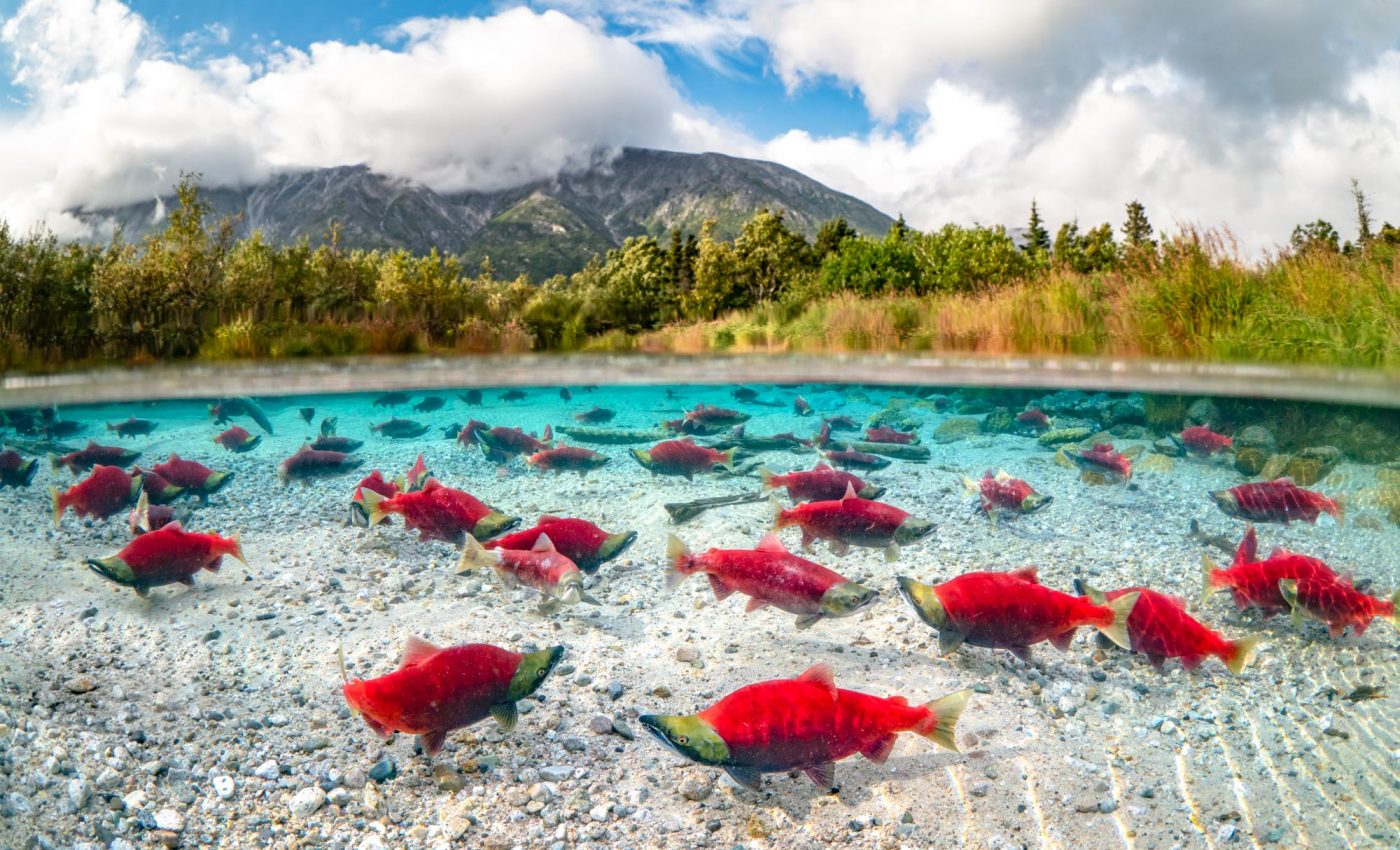
Nurturing hotspots for salmon in Alaskan rivers shift annually
Researchers from the University of Washington analyzed stones that form in the ears of Alaskan Sockeye and Chinook salmon and found that these salmon populations depend on hotspots in the Nushagak River watershed to thrive, and these hotspots change from year to year.
These ear stones, called otolith, displayed chemical signatures that led researchers to conclude that hotspots within the Nushagak River are responsible for successful salmon population growth. These favorable locations change yearly depending on climate conditions and topography, each of which affects potential salmon habitats.
“We found that the areas where fish are born and grow flicker on and off each year in terms of productivity,” said lead author Sean Brennan, a postdoctoral researcher at the UW School of Aquatic and Fishery Sciences. “Habitat conditions aren’t static, and optimal places shift around. If you want to stabilize fish production over the years, the only strategy is to keep all of the options on the table.”
The study, published in Science, butts against environmental analysis recently conducted to gain permits for the proposed copper and gold excavation site Pebble Mine, which would be located near the headwaters of the Nushagak River.
The U.S. Army Corps of Engineers’ analysis only took two to three years of fish counts into consideration, however, this new study proves that habitat shifts annually. Therefore, an area that is productive for a short amount of time does not represent its overall value to the fish or larger ecosystem.
“The overall system is more than just the sum of its parts, and small pieces of habitat can be disproportionately important,” said senior author Daniel Schindler, a professor at the UW School of Aquatic and Fishery Sciences. “The arrows point to the need to protect or restore at the entire basin scale if we want rivers to continue to function as they should in nature.”
The research team was able to reconstruct the geographic locations of about 1,400 salmon, just by analyzing the fish’s otolith, which grows as the fish matures. Each otolith has chemical signatures that are linked to the waters in which the fish has lived, and can be dissected using unique isotopes of the trace element strontium, found in bedrock.
“The otolith is this natural archive that basically provides a transcript of how a fish moved downstream through the river network,” Schindler said. “Essentially, we’re sampling the entire watershed and letting the fish tell us where the habitat conditions were most productive in that year.”
Otolith analysis showed that fish populations shift all over the Nushagak watershed, including in areas near the proposed Pebble Mine.
“The big thing we show is these types of dynamics are critical for stabilizing biological production through time,” Brennan explained. “When you have a range of habitat available, the total production from the system tends to be more stable, reliable and resilient to environmental change.”
The authors hope their findings will influence public opinion about the proposed mine, and potentially thwart the plan altogether.
“Results like those we’re presenting in this paper hopefully will get people to think about what they stand to lose by starting to develop and eliminate habitat in places like the Nushagak River,” Schindler said. “The Pebble Mine environmental impact statement, which is supposed to be a mature, state-of-the-science assessment of risks, really does a poor job of assessing risks of this specific project.”
—
By Olivia Harvey, Earth.com Staff Writer
Image Credit: Jason Ching/University of Washington













